S. M. Prokudin-Gorsky: The Splendors of Russia in Natural Color 1905–1916
Exhibition of Šechtl & Voseček Museum of Photography February–May 2006
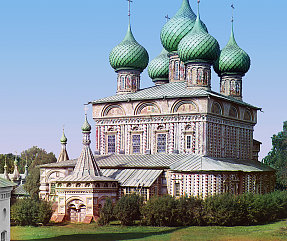
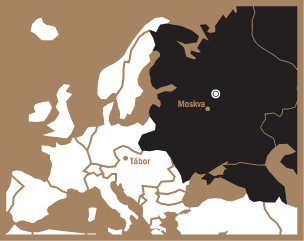
Церковь Воскресения на дебрях (с другой стороны).
Another view of the Church of the Resurrection in the Grove.
Library of Congress, Prints
and Photographs Division,
Prokudin-GorskiiCollection,
LC-DIG-ppmsc-03975. Digital color rendering by Walter Frankhauser.
https://hdl.loc.gov/loc.pnp/ppmsc.03975


Вход в церковь Воскресенья. Кострома.
Entrance to the Church of the Resurrection in the Grove.
Library of Congress, Prints
and Photographs Division,
Prokudin-GorskiiCollection,
LC-DIG-ppmsc-03974. Digital color rendering by Walter Frankhauser.
https://hdl.loc.gov/loc.pnp/ppmsc.03974
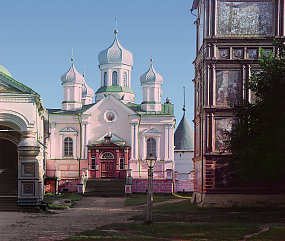

Собор Рождества Пресвятой Богородицы в Ипатьевском монастыре (зимний)
Cathedral of the Nativity of the Holy Mother of God in Monastery of St. Hypatius (for wintertime services).
Library of Congress, Prints
and Photographs Division,
Prokudin-GorskiiCollection,
LC-DIG-ppmsc-04444. Digital color rendering by Walter Frankhauser.
https://hdl.loc.gov/loc.pnp/ppmsc.04444
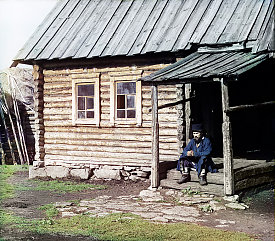
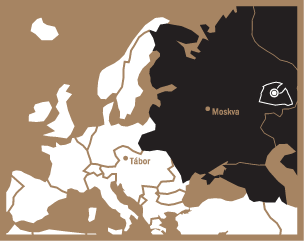
Башкир у своего дома.
Bashkir by his house.
Library of Congress, Prints
and Photographs Division,
Prokudin-GorskiiCollection,
LC-DIG-prokc-20661. Digital color rendering by Jan Hubička based on color composite by Blaise Agüera y Arcas.
https://hdl.loc.gov/loc.pnp/prokc.20661
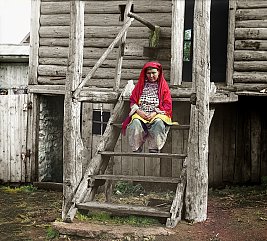

Башкирка в национальном костюме.
Bashkir woman dressed in national costume.
Library of Congress, Prints
and Photographs Division,
Prokudin-GorskiiCollection,
LC-DIG-ppmsc-03964. Digital color rendering by Walter Frankhauser.
https://hdl.loc.gov/loc.pnp/ppmsc.03964
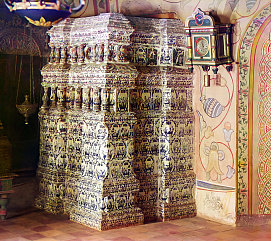
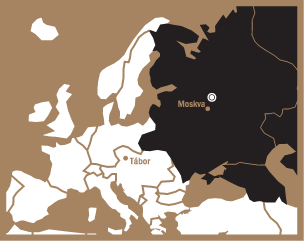
Изразцовая печь в Княжьем тереме.
Tiled stove in the Princes' Chambers.
Library of Congress, Prints
and Photographs Division,
Prokudin-GorskiiCollection,
LC-DIG-ppmsc-03943. Digital color rendering by Walter Frankhauser.
https://hdl.loc.gov/loc.pnp/ppmsc.03943

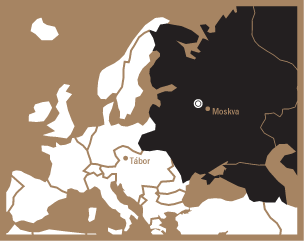
Воскресенский женский монастырь с правого берега р. Тверцы. г. Торжок.
Convent of the Resurrection from the right bank of the Tvertsa River. The town of Torzhok.
Library of Congress, Prints
and Photographs Division,
Prokudin-GorskiiCollection,
LC-DIG-ppmsc-03985. Digital color rendering by Walter Frankhauser.
https://hdl.loc.gov/loc.pnp/ppmsc.03985
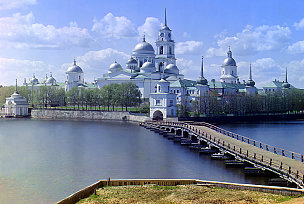
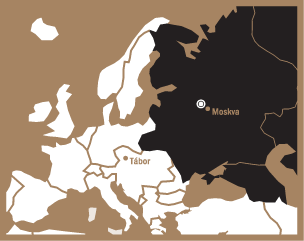
Вид на монастырь от Светлицы.
View of the monastery from Svetlitsa.
Library of Congress, Prints
and Photographs Division,
Prokudin-GorskiiCollection,
LC-DIG-ppmsc-03973. Digital color rendering by Walter Frankhauser.
https://hdl.loc.gov/loc.pnp/ppmsc.03973
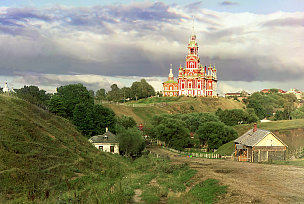
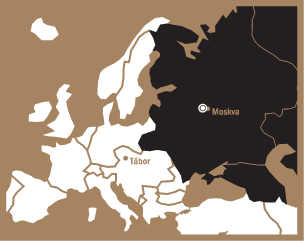
Общий вид собора с ю.-з.
General view of the Cathedral of St. Nicholas from the southwest.
Library of Congress, Prints
and Photographs Division,
Prokudin-GorskiiCollection,
LC-DIG-ppmsc-04438. Digital color rendering by Walter Frankhauser.
https://hdl.loc.gov/loc.pnp/ppmsc.04438
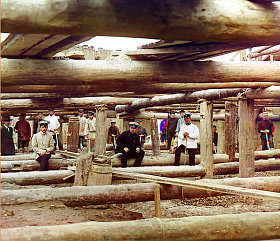
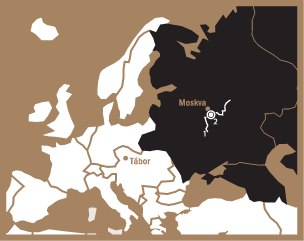
Бетонировка флютбета плотины.
Laying concrete for a sluice dam.
Library of Congress, Prints
and Photographs Division,
Prokudin-GorskiiCollection,
LC-DIG-ppmsc-04448. Digital color rendering by Walter Frankhauser.
https://hdl.loc.gov/loc.pnp/ppmsc.04448
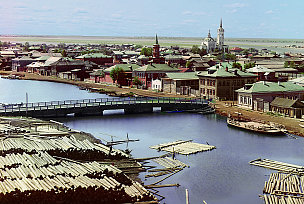
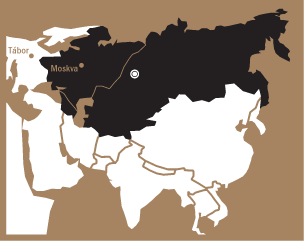
Вид на г. Тобольск с севера с колокольни Преображенской церкви.
View of Toboľsk from the north, from the bell tower of the Church of Transfiguration.
Library of Congress, Prints
and Photographs Division,
Prokudin-GorskiiCollection,
LC-DIG-ppmsc-04447. Digital color rendering by Walter Frankhauser.
https://hdl.loc.gov/loc.pnp/ppmsc.04447
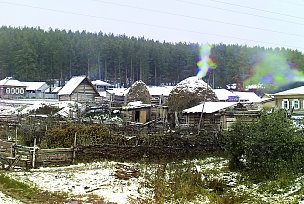
Способ хранения сена. Ст. Вязовая.
Method of hay storing. The station of Vyazovaya.
Library of Congress, Prints
and Photographs Division,
Prokudin-GorskiiCollection,
LC-DIG-ppmsc-04426. Digital color rendering by Walter Frankhauser.
https://hdl.loc.gov/loc.pnp/ppmsc.04426
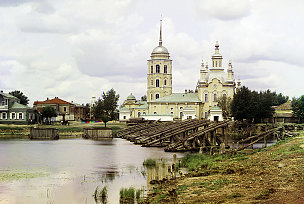
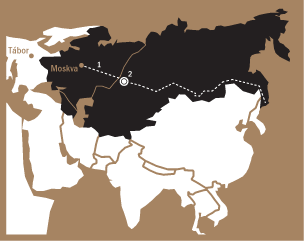
Собор в г. Шадринске (150 лет).
Cathedral in Shadrinsk (150 years old [now 244 years]).
Library of Congress, Prints
and Photographs Division,
Prokudin-GorskiiCollection,
LC-DIG-ppmsc-04660. Digital color rendering by Walter Frankhauser.
https://hdl.loc.gov/loc.pnp/ppmsc.04660
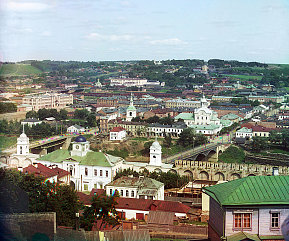
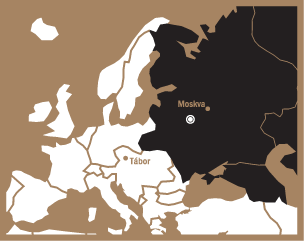
Общий вид северной части с колокольни Успенского собора. г. Смоленск.
General view of the northern part from the bell tower of the Assumption Cathedral. City of Smolensk.
Library of Congress, Prints
and Photographs Division,
Prokudin-GorskiiCollection,
LC-DIG-prokc-20408. Digital color rendering by Jan Hubička based on color composite by Blaise Agüera y Arcas.
https://hdl.loc.gov/loc.pnp/prokc.20408
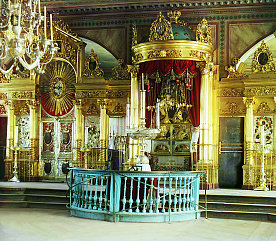

Чудотворная икона Божьей Матери-Одигитрии в Богоматеринском храме.
Miraculous icon of Mother of God-Odigitria in the Church of the Assumption of the Virgin.
Library of Congress, Prints
and Photographs Division,
Prokudin-GorskiiCollection,
LC-DIG-ppmsc-03982. Digital color rendering by Walter Frankhauser.
https://hdl.loc.gov/loc.pnp/ppmsc.03982
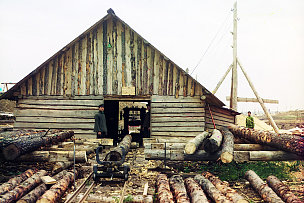
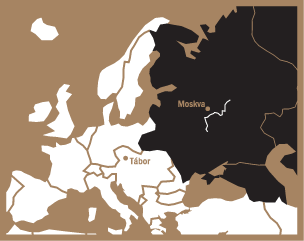
Лесопилка.
Sawmill. Oka River
Library of Congress, Prints
and Photographs Division,
Prokudin-GorskiiCollection,
LC-DIG-prokc-21459. Digital color rendering by Jan Hubička based on color composite by Blaise Agüera y Arcas.
https://hdl.loc.gov/loc.pnp/prokc.21459